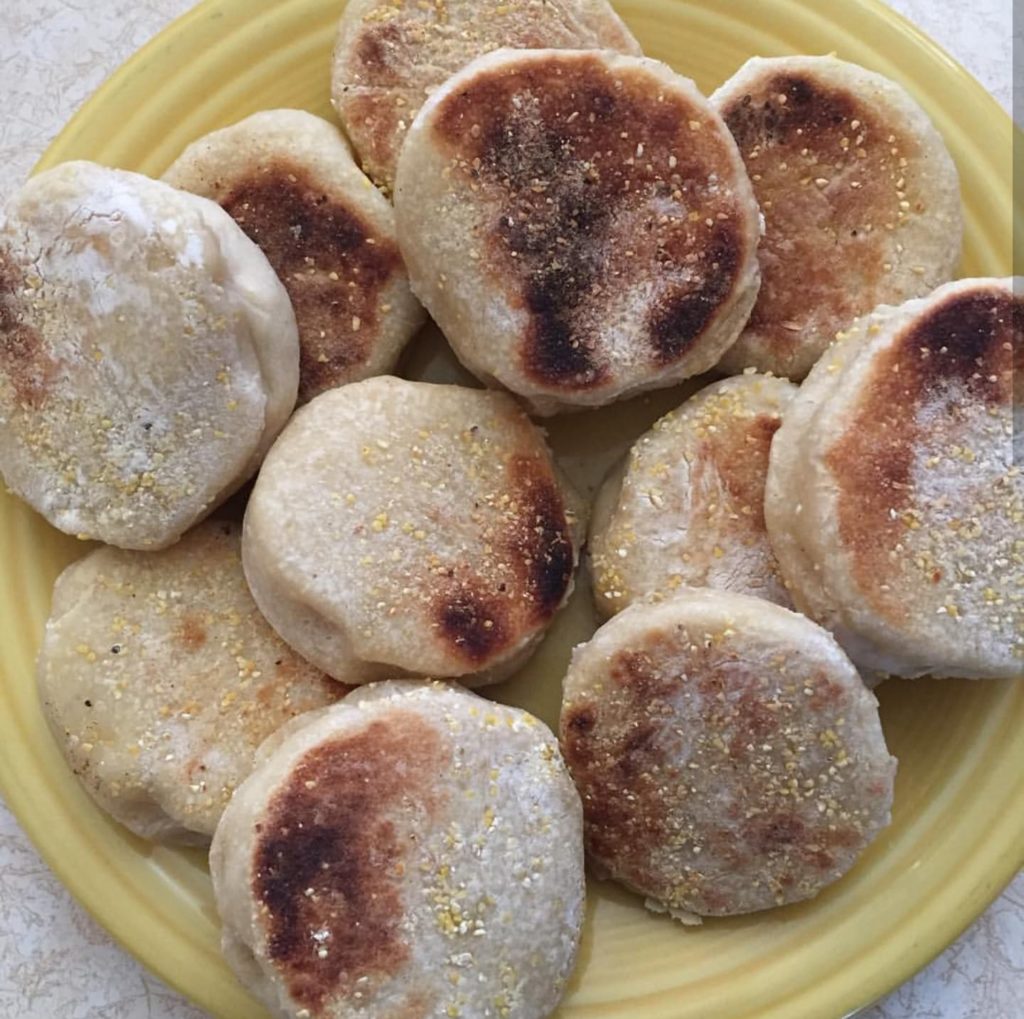Sourdough It
Let’s feed the starter.

What exactly is this fermented craze?
I think a lot of people are feeding the sourdough these days. It is just one more thing we don’t have to put on the grocery list. Who wants to buy bread? Most bread comes in a plastic bag (we can’t recycle plastic anymore), making your own is relatively simple (if you have some time), and flour and water are the only things a starter eats, those things are cheap. Fermented bread is also good for your gut. If you have a gluten sensitivity this bread could still be your friend.
Is it hard to keep starter alive?
I bet you have a pet, or a kid, or a plant in your life. Keeping one of those things alive, is more difficult than keeping a sourdough starter alive. Your starter can live, hidden in the back of your fridge, behind some old pickles, for weeks (probably months). It isn’t necessarily the most optimal place for it, but if you don’t need warm sourdough bread, for a spell, it’ll be waiting for you.
The Feeding
We feed the sourdough the night before we want to start a recipe. The feed we like is from Tartine Bread, 66 grams of starter (the one in the back of the fridge), 200 grams of water and 400 grams of flour. We squish the starter around, in the room temp water, then add flour (sometimes a mix of white/wheat/rye/other) and squish some more. Get your hands in it, it’s sticky business. You can monkey with the hydration of your bread as you get more experienced, but I have found my bread tastes yummy, even without the monkey-biz.

Lunch from the yarden/homestead. PSA: Eat your dandelions, don’t spray them. Our bee friends need them, and they are FULL of nutrients and minerals our bodies are in dire need of.
Supplies you’ll need/want
It makes the process much more enjoyable to have a handful of helpful tools. (some affiliate links below)
- A book, the internet is fine, but a book is better. I bet you’ll start collecting a few, when you’re hooked. We have this one & Tartine Bread.
- Scale – Nothing fancy, just a scale that can measure grams. If you’re going to be a legit baker, you need to measure in grams (a baker once told me).
- A big ass bowl or two.
- Jars for storing sourdough. We like these the most, but you can use something else. You don’t need a seal, remember, your dough baby is fermenting and growing.
- You want some dough scrapers and a heavier duty bench scraper.
- A couple of proofing baskets and a bread lame, although you could just use a knife. One of my favorite parts of baking bread is making the pretty design atop the loaf.
- A dutch oven, or two. We generally bake two loaves at once. If you use the feed mentioned above, you’ll easily have two loaves.
- Flour, water and starter. We share our starter often and we got it from a friend. We’ll even mail you some, if you ask real nice.
- My good pal Dig has these beeswax wraps in her shop to keep your loaf soft. AND, you probably need one of her fab bento bags for delivering a fresh loaf to someone special.
- We store our bread in a bag like this at home. Here is just one more beeswax option. Sometimes we make a handful of loaves during the holiday season to gift. This would make the best giftwrap tied up with twine.
How To: (our way)
You don’t need to be a baker, you don’t need to know anything about baking. I’m serious. You’re going to look and feel like a baker when you pull your first loaf out of the oven. We started with the Tartine method, which felt pretty guaranteed to work. It works! Enjoy the eye candy.







First, we feed the starter. The morning after, you stick your nose inside that jar, take a whiff, and smile. Then, you follow your recipe, in your book of choice, for your baked good of choice. Bread, country loaves, bagels, desserts, dinner rolls, english muffins (although a visiting dog ate nearly the entire bag of these when I made them), biscuits, waffles, pancakes, the list goes on and on. And, before you toss your discard look for recipes. We make a lot of crackers, waffles, biscuits, etc. You can find a recipe for anything you want to attempt. Use your bubbly fed starter, start buying flour in bulk, and make sure you’re near a water source.

















We spend the bulk of a day taking turns flipping the dough, if we decide to use the Tartine method, so be prepared for that. But, also know there are so many lazy methods where you let your sourdough ferment overnight, and wake to a delightful poof, ready to be worked or baked. We’ve brought our dough in the trunk of our car (if we’re in the middle of the turning game), and out to our hot tub, and on some small journeys. This process builds tension in your dough and makes those big delightful bubbles, in your ‘crumb shots’. It is easy to transport and bake away from home, as long as you have an oven, nothing better than a fresh breakfast loaf before you bike to the sun. Don’t forget to bring your dutch oven.

Typically we refrigerate our dough overnight after our loaves are formed, and bake the next day. We usually eat a loaf, and sometimes share a loaf. Once you get your loaves mastered, you’ll want to share with all of the people you know, and even all of the people that decide to read your blog. And, bread’ll be what is requested of you at every family gathering, potluck, and hang. xo

